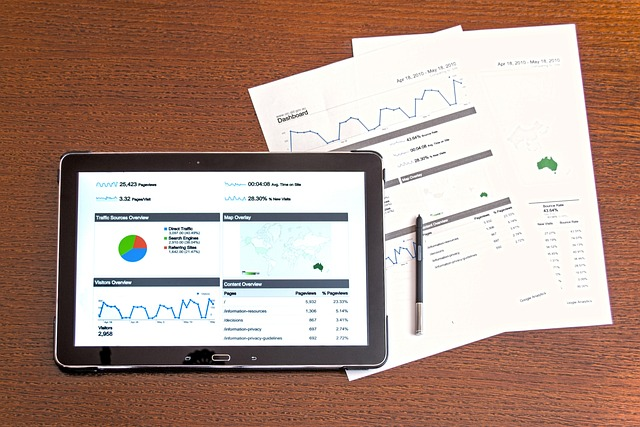What is a Digital marketing competitive analysis?
What is a digital marketing competitive analysis; It’s important to know why your competitors are successful. It will be challenging to match them or give yourself an edge over them if you don’t.
Conducting a competitive analysis is way more profound than just looking at what your competitors offer. Still, it is the best way to get this information so that you can improve your own company and stay on top of what your competition is doing.
This article post will explore why conducting a competitive analysis matters for digital marketing and search engine optimisation (SEO) and how it can help you succeed in business and beat your competitors!
“The value of being proactive rather than reactive in competition analysis is critical to a company’s success.“
What makes a compelling marketing Competitive analysis study
A compelling competitive advantage study can help us narrow our choices, spot opportunities that other businesses are missing, and determine how to expand our business to take advantage of those gaps.
It also helps with keeping an eye on our rivals while still looking at the competition.
You may be confident that you can get tens of thousands of Pounds. -> If you aren’t already, you should be.
Why is it necessary, how do you go about doing it, and how do you compare to your competitors?
We’ll show you how to do it, so make a mental note of everything we say.

Why do Competitive Analysis?
The goal of a competitor study is to understand your competitors‘ strengths and shortcomings in comparison to your own, as well as to discover a market gap.
It is essential to any social media or SEO plan and will help you reach your target customers.
It’s critical to conduct competitive research to reach your target customer.
- It can assist you in recognising how you may improve your company plan.
- It will show you how to outdo your competitors in these areas so that your consumer’s attention doesn’t wander.
- This will lead to a competitive advantage over others in your sector.
- Help you effectively hit your target audience and beat your major competitor’s focus.
Competitive analysis in marketing can also help you determine the best ways to expand your business.
It will show you where there’s room for improvement and how to do it so that others can avoid getting in on the action first.
Effective competitive research can save time, money, and effort when starting or expanding a business.

Importance of marketing competitor analysis: The need to compare yourself to rivals has never been more critical.
Direct and indirect competitors broken down
Before you can begin, you must first identify your competitors. But how can you do this? The easiest method to determine if a rival firm is a key competitor is to ask yourself the following question:
- What is their service like? Is it the same or different from you?
- Are you looking at the same demographic? Look at their case study. What size of clients do they work with?
You’ll have your usual local competitors, but you’ll also have those competing for your exact keywords.
Direct competitors:
A direct competitor offers the same products and services to the same target market and customer base in a direct rivalry, with the goal of profit and market share growth.
This means that your direct competitors target the same audience as you, selling the same products in a similar distribution model.
Some of these may be much larger competitors in the market but don’t hesitate to note what they are doing to increase revenue.
How to find your Direct competitors?
You can find your direct competitors by a simple Google search of your service plus a location. For example, we would google search ” Digital Marketing Agency Kent” Or SEO Agency Kent. “
This will allow you to create a list of 5 to 10 direct competitors. You can then begin to pick these apart.
Indirect competitors:
An indirect rival is another firm that sells similar products and services, but the ultimate objectives are different.
For example, in the field of digital marketing, a lot of IT companies provide comparable services to their clients frequently through white labels, so they are indirect competitors.
Substitute competitors:
Another company is offering a product or service to your customers that you also provide.
Once what sort of competitors you would like to be compared against has been considered, it is essential to understand how you stand out. So that’s the next part of the analysis.
Pro tip: Always be looking for new local potential competitors that are popping up.
Further reading: Keyword research the ultimate guide

Why knowing your market share is essential to your business
What is market share?
In business, two products are competing in a market when they share customers. One of the products has a larger share of the customers than the other product, and therefore can be said to have greater market share. Market share is a ratio that quantifies the size of a business in a specific market based on units sold or some other metric.
Why you need to know my market share?
Market share is a useful performance metric in your competitive analysis to understand the relative size of your company in a different markets and marketshare changes over time help you build a picture of the market trends.
It gives me an idea about where my business stands within entire industry or market. If i am able to identify that why my company faces challenges in capturing market share, then it will be easier to plan for future.
How to calculate your market share?
Market share is calculated by dividing the total sales of one particular product or industry by the sales of one company over the same period of time.
When your firm enters a new market, it will have no measurable market share. When you begin to sell your products or services in this new market, you will have to estimate the size of that market using industry trends stats and then divide your total sales by that number.

In your competitive analysis, you should be asking the following questions:
The Product
- Is your company’s product the same as or similar to your competitors? (You could be missing potential customers)
- What differentiates you from your competitors?
- The Positioning Strategy
- How does your company’s positioning compare to that of the competition?
- Do you have many advantages in this area, or do they have the edge over you? This includes factors such as pricing and distribution strategies.
The Brand
- Does their brand target the same audience as yours?
- Do they have a similar name that could be confused with yours?
- What is the messaging around their brand, and does it resonate with your target market?
- The Marketing Mix
- How do they allocate their budget across traditional TV, radio, print or online advertising channels?
- Are they doing any digital marketing that you’re not doing?
- Who do competitors target? What are rival firms doing you are not?
- Are there a lot of mentions of their brand on Google?
Marketing
- What channels do they use for marketing these products?
- Do they sponsor any events or have a solid social media presence?
- What kind of PR efforts are they making?
- Are They Innovative?
- Does your company offer anything new that the competition doesn’t?
- Is their product better, faster, or cheaper than currently available?
- Do they have a presence on social media? If so, how are they utilising it? Take a look at the content, followers, activity, and engagement.
- Do they have marketing materials like a podcast, webinars, blogs, eBooks or anything else?
- What campaigns are they running? (both online and offline)
- What kind of content are they writing? Is this something you can replicate or do better?
- What tone of voice do they use?
- What social media platforms are they using?
- Are they doing any search engine optimisation?
Technology
- What is their website made with (you can use the tool Built With to identify this)
- Is their website easy to use?
- Do they have a mobile app??
- What other technologies do they use that that you you don’t?
- What is their website page speed like? )You can check your website speed by taking our free SEO Audit. )
- What are other sites linking back to your competitor’s website but not yours?
- What is their sales process, and how does it give them a competitive edge?
- Do their social media channels have a live chat?
Customers
Do customers engage with them? How do they communicate?
- What sort of content do they respond well to?
- What platforms are they using to engage?
- Are they vocal about their experience with the competitor?
- Competitors are constantly changing and evolving, so you must do too. Keep your competitive analysis up-to-date to ensure you’re always one step ahead
Competitor Analysis Framework Template
Below is a competitor analysis framework template you can use to get started. This will help you gather all the information you need to make a well-informed decision about how to compete against your rivals.
This can then be converted into a competitor analysis report to help you make an informed decision on your marketing strategy.
Digital marketing competitive analysis template

How Often Should I Perform a Competitor Analysis in digital marketing strategy?
It depends on the industry you’re in. If your competitors are constantly releasing new products, then it’s worth conducting a competitor analysis once every quarter to see how this impacts their market share and sales.
Keeping up-to-date with what they’re doing will give you an advantage and help create strategies for your own business.
How Blue Moxie can help you with your competitive analysis and other Digital marketing tactics.
Blue Moxie Digital Agency can assist you with a digital marketing competitor analysis as part of your broader marketing plan.
In addition, we provide SEO, Social media and more Kent digital marketing services. Don’t hesitate to contact us if you have any questions about how we may assist your company.
What should a marketing competitive analysis include?
A competitive marketing analysis should include a comprehensive competitive landscape assessment to inform a business’s marketing strategy. This assessment should consist of several vital components, including a review of competitors’ products and services, pricing structures, promotional processes, customer service offerings, core technology platforms, website design elements, target audiences and customer demographics, market reach and share. It is also essential to consider how competitors position themselves regarding brand identity and messaging.
To understand competitors’ actions in the marketplace, a competitive marketing analysis should also include qualitative research, such as interviews with customers or industry experts, to uncover unique insights into their strategies and performance. In addition to customer feedback, it is beneficial to monitor competitors’ websites for changes in any of their messaging or products/services that could influence their approach or success.
Furthermore, analysing customer reviews can provide valuable insight into consumer sentiment towards particular products or brands and identify potential opportunities or areas of improvement. Keeping tabs on industry blogs and social media sites can also help identify trends that may be advantageous in developing innovative solutions or approaches. Finally, to get an even more comprehensive view of the competitive landscape, monitoring channels outside the direct retail space, such as advertising campaigns or trade shows, can provide additional context into what competitors are doing to capture consumers’ attention.
Finally, it is essential to evaluate the strengths and weaknesses of each competitor relative to one another when completing a competitive marketing analysis. This includes taking into account market size relative to each company’s current share and any emerging technologies being used that could give certain players an edge over others. Additionally, assessing financials, including revenue growth rate and profitability margins, will provide helpful context for evaluating how effectively companies perform against one another in the market overall. Obtaining this understanding before formulating a strategy for entering or expanding within a given market space will ensure that resources are allocated appropriately for maximum ROI.
How to do a simple competitive analysis
The first step in conducting a competitive marketing analysis is determining your direct competitors and their products or services.
It is also essential to consider current and potential competitors; an upstart may enter the market at any time with a new offering that could take away market share from existing players. Once you have identified your competitors, you need to analyse their strengths, weaknesses, opportunities and threats (SWOT).
Strengths are areas where the competitor performs better than you; weaknesses are areas where they serve worse than you; opportunities represent future potential; and threats represent any external forces that could pressure your business.
Knowing this information will help create a plan of attack which focuses on exploiting competitors’ weaknesses while minimising threats from them.
In addition to SWOT analysis, it is essential to look at competitor pricing models and customer service approaches.
By examining how much customers pay for similar products or services from each competitor, businesses can better understand how price sensitive their customer base may be and adjust their pricing accordingly.
Additionally, by understanding the customer service methods of competitors, businesses can improve upon them by delivering superior service relative to the competition.
Finally, it is crucial for companies conducting a competitive analysis to stay abreast of industry trends and technological changes which could disrupt established markets or create new ones altogether.
Keeping track of these changes can give ahead-of-the-curve insight into emerging markets where strategic partnerships or investments may be necessary to remain competitive.
What is competitive intelligence?
Competitive intelligence is a term used to refer to the activities taken by an organisation to identify, analyse, and act on internal and external data relating to its competitors to gain an advantage in the marketplace.
It involves gathering market intelligence from both direct and indirect sources to understand what rivals are doing and how they position themselves compared to the company.
The goal of competitive intelligence is to provide insights that will help companies improve their strategic decision-making process.
Companies can use this information to improve their overall strategies, including product development, marketing campaigns, pricing strategies, customer service initiatives, and more.
It can also be used to benchmark against competitors and stay one step ahead of them.
